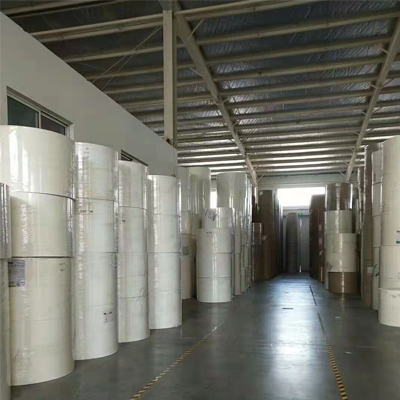- Home
- Supplier of Decorative Papers for Furniture and Home Interiors
ਦਸੰ. . 15, 2024 19:13 Back to list
Supplier of Decorative Papers for Furniture and Home Interiors
Exploring the World of Furniture Decoration Paper Supply
In the realm of interior design, furniture decoration plays a crucial role in defining aesthetics and functionality within living spaces. A vital component of this process is the use of furniture decoration paper, which not only enhances the visual appeal of furniture but also protects surfaces and extends their lifespan. As a supplier of furniture decoration paper, it is essential to understand the variety of options available, their applications, and the benefits they offer to both manufacturers and consumers.
What is Furniture Decoration Paper?
Furniture decoration paper, often referred to as decorative film or laminate, is a specialized type of paper designed to cover surfaces of furniture such as cabinets, tables, and chairs. This paper comes in a variety of textures, colors, and patterns, mimicking materials like wood, stone, or textiles. It is primarily made of a cellulose-based substrate, which is then treated with decorative prints, coatings, or overlays to enhance durability and ease of maintenance.
Types of Furniture Decoration Paper
1. Melamine Paper This type is widely used in the furniture industry due to its durability and resistance to scratches, stains, and moisture. Melamine paper is typically used to cover particleboard and MDF (medium-density fiberboard), making it an ideal choice for kitchen cabinets and shelving.
2. PVC Laminates Polyvinyl Chloride (PVC) laminates offer a more extensive range of colors and textures. They are particularly popular for their waterproof qualities, making them suitable for areas that may be exposed to spills and humidity, such as dining rooms and bathrooms.
3. Vinyl Films These are versatile and can be used for both furniture surfaces and wall coverings. Vinyl films are flexible and can be easily applied to irregular shapes and surfaces. With digital printing technology, custom designs are readily achievable, allowing businesses to cater to specific customer preferences.
4. Paper Backed Laminates These laminates provide a balance between affordability and aesthetic appeal. They are commonly used for low-cost furniture and decorative applications, providing an attractive finish without the high price tag.
Applications of Furniture Decoration Paper
furniture decoration paper supplier

Furniture decoration paper finds extensive utility across various sectors, including residential, commercial, and hospitality industries. In residential furniture, it can be used to revamp old pieces, providing a cost-effective way to refresh interiors without the need for complete replacements. In commercial settings, businesses often use decorative papers to create signature looks that reflect their brand identity.
The hospitality sector, including hotels and restaurants, appreciates the ease of maintenance and versatility of furniture decoration paper. It allows them to maintain a consistent theme while catering to a wide array of customer preferences. Seasonal or thematic updates can easily be achieved by changing the decorative paper, keeping the ambiance fresh and engaging.
Benefits of Using Furniture Decoration Paper
1. Cost-Effectiveness One of the most significant advantages of using furniture decoration paper is its affordability. It provides a high-end look without the hefty price tag associated with real wood or stone materials.
2. Easy to Clean and Maintain Most decorative papers are designed to resist dirt and stains, allowing for straightforward cleaning routines. This is particularly important in high-traffic areas or homes with young children and pets.
3. Wide Variety of Designs The extensive range of patterns, colors, and textures available means that consumers can find the perfect style to suit their personal tastes or brand image. Customization options are also available, making it easy to achieve bespoke results.
4. Sustainability Many suppliers are now focusing on sustainable and eco-friendly materials in furniture decoration. Utilizing recycled materials or offering products sourced from sustainable forests can significantly reduce the environmental impact of furniture manufacturing.
Conclusion
As a key player in the furniture industry, the supply of decoration paper is an ever-evolving domain filled with potential. By understanding the various types of decorative papers available, their applications, and the benefits they offer, suppliers can not only enhance the attractiveness of their products but also contribute positively to sustainability efforts in the furniture sector. As design trends continue to shift, staying informed and flexible will be crucial for suppliers to meet the demands of an increasingly discerning market. Whether for personal use or commercial projects, furniture decoration paper remains a vital ingredient in creating beautiful, functional spaces.
Latest news
-
High-Quality Bathroom Cabinet Contact Paper – Durable & Stylish Leading Suppliers, Exporters, Manufacturers
NewsJul.08,2025
-
Premium Wood Contact Paper for Desk – Reliable Suppliers & Exporters
NewsJul.08,2025
-
Premium Contact Paper for Table Top – Durable & Stylish Surface Solution from Leading Manufacturer
NewsJul.07,2025
-
Duplex Board with Grey Back - Reliable Supplier & Competitive Price Manufacturer & Exporter
NewsJul.07,2025
-
Premium White Contact Paper on Cabinets – Trusted Exporters & Suppliers
NewsJul.06,2025
-
High-Quality Duplex Board Packaging for Food Reliable Manufacturer & Supplier
NewsJul.06,2025

